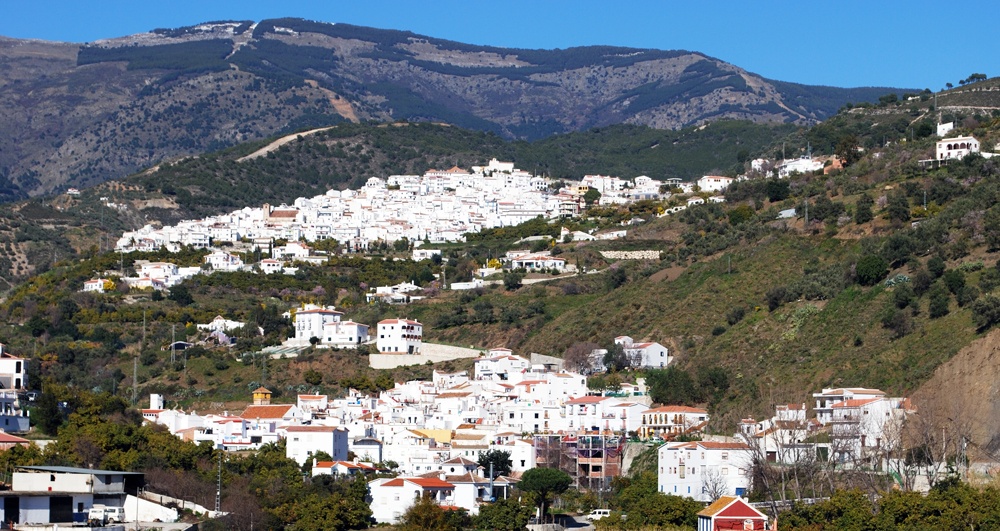Although there are countless corners that evoke the Arab past of the Costa del Sol, a special charm envelops the six small towns of the region of Axarquia. To discover the beauty of the legacy of Al-Andalus (the name by which the Arab territory of the Iberian Peninsula was known) just walk the Mudejar Route of Axarquia, a cultural journey through this land steeped in history, tradition and legend.
Located on the foothills of the Natural Park Sierras de Tejeda we find Almijara and Alhama. These villages cherish the best display of Andalusian architecture of the area. If a walk between minarets, parapets, arches and “algorfas” sounds like a good plan, get to know what awaits you in this itinerary.
Arenas, viewpoint of the Axarquia
Our route begins in Arenas, a village at the foot of the ruins of Bentomiz Castle, which used to be an important fortress during the Arab domination. No less interesting are the Church of Santa Catalina Martir, built in Moorish style on a mosque and the minaret of Daimalos, one of the oldest in Spain.
The church of San Pedro de Corumbela was also built on an Arab temple with its minaret converted into a bell tower. Nearby is the Mirador de la Era, an ideal spot to enjoy the scenery of Axarquia. But if you prefer to dive deeper into the countryside, you can walk the Camino de las Tres Fuentes that leads to Sayalonga.
Archez and Salares
Known as the “Joya Merinita” of the twelfth century, Archez preserves in its streets and hearths the indelible Muslim imprint. Its great emblem is the minaret of the Mudejar Church of La Encarnacion. Moreover, Arab reminiscences are also perceived in its cuisine, with typical dishes such as fennel stew or cod omelettes with cane honey.
Archez also has an equestrian centre that organises horseback riding through the surroundings of the municipality. Less than 4.3 miles separate Archez from the village of Salares. Walking down its steep streets and among its whitewashed houses you will run into the Parish of Santa Ana, which is full of interesting paintings. Special mention the Almohad minaret of the original mosque and the Roman bridge over the Salares river, surrounded by lush nature.
Sedella and Canillas de Aceituno
Next stop is Sedella, a village that offers beautiful views of the Sierra de Tejeda. Its main monuments are the Casa Torreon, with a Moorish style, the Church of San Andres and the Hermitage of Esperanza, built from the remains of the Moorish castle. Mudejar heritage is also in the confectionery, where some donuts called “roscos tontos” are the stars.
Our route concludes in Canillas de Aceituno, whose territory extends to the peak of La Maroma. A village of white streets decorated with potted plants and flowers. Its most precious jewels are the church of El Rosario, the Arab Aljibe and the Casa de los Diezmos. And do not forget the vestiges of the old Moorish fortress. Do you dare discover them?








